In the long-term operation of the plc system, some faults may occur. The PLC's own fault can be judged by self-diagnosis, and the external fault is mainly analyzed according to the program. Common faults include power system faults, host faults, communication system faults, module faults, and software faults.
1. General inspection and treatment of common faults The purpose of the overall inspection is to find out the general direction of the fault point, and then gradually refine it to determine the specific fault point to achieve the purpose of eliminating the fault. The general inspection and processing procedures for common faults are shown in Figure F-2-1. 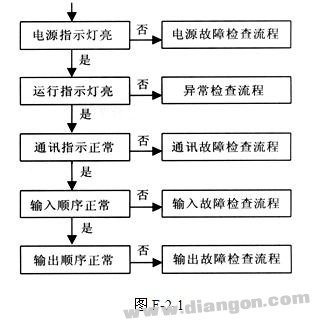
2. Power failure check and processing
PLC system host power supply, expansion machine power supply, module power supply, any power supply display is not normal, you must enter the power failure check process, if the function of each part is normal, only the LED display is faulty, otherwise the external power supply should be checked first, if external The power supply is not faulty, and then check the internal power failure of the system. The inspection sequence and contents are as described in Table F-2-1.
Table F-2-1 
3. Abnormal fault check and processing
The most common fault of the PLC system is to stop running (the running indicator is off), unable to start, work cannot be done, but the power indicator is on. At this time, an abnormal fault check is required. The inspection sequence and contents are shown in Table F-2-2.
Table F-2-2 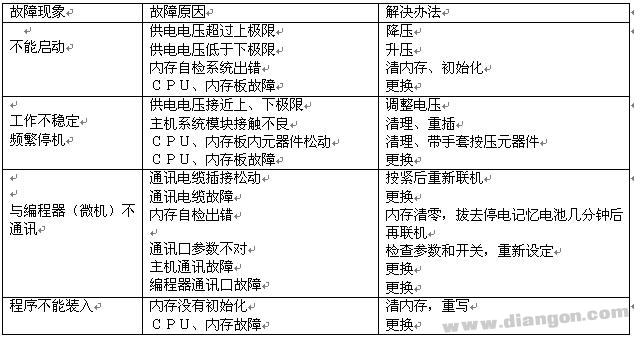
4. Communication fault checking and processing communication is the basis of PLC network work. The main station of the PLC network, the communication processor of each slave station, and the communication module all have normal working instructions. When the communication is not normal, a communication failure check is required. The inspection sequence and contents are shown in Table F-2-3.
Table F-2-3 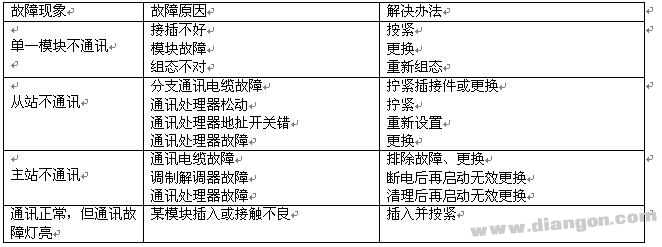
5. Input and output fault check and processing The input/output module is directly connected to the external device, which is a part that is prone to failure. Although the input and output module is easy to judge and the replacement is fast, the cause must be ascertained, and it is often caused by external causes. If the cause of the fault is not found in time, the fault is eliminated in time, which is very harmful to the PLC system. The inspection sequence and contents are shown in Tables F-2-4 and F-2-5.
Table F-2-4 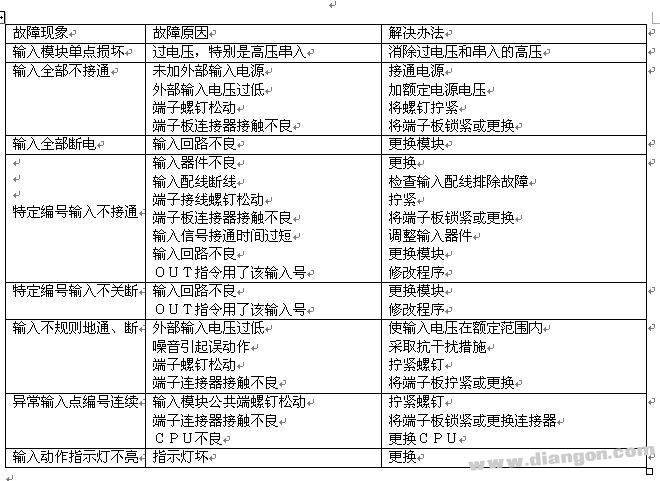
Table F-2-5 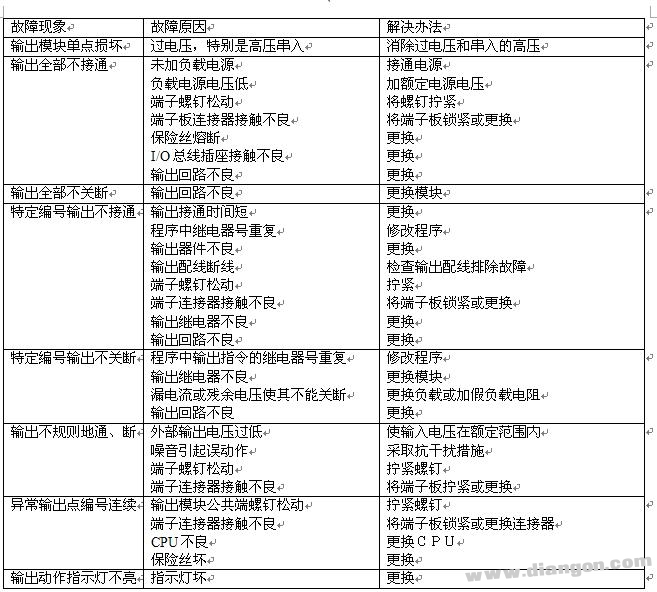
4Installation status Whether each unit is reliable. Is the connector of the cable fixed? Is the screw of the external wiring fully loose? No looseness, no looseness, no abnormality.
5 life component battery, relay, memory, etc. are subject to the specifications of each component
F.4 Programmable Controller Troubleshooting Guide There may be some specificity for the specific PLC fault check. The troubleshooting and handling methods for the S7-200 are given below. See Table F-4-1.
Table F-4-1 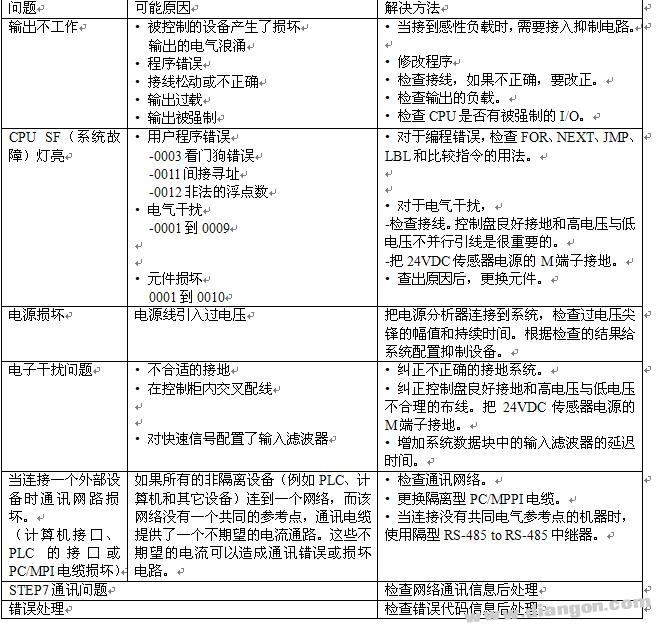
It should be said that PLC is a controller with high reliability and stability. As long as it is installed and used according to its technical specifications, the probability of failure is extremely low. However, in the event of a malfunction, it is necessary to check and process according to the above steps. In particular, check for damage due to malfunction of external equipment. Be sure to find out the cause of the fault and try again after troubleshooting.
Table Air Purifier,Table Top Air Purifiers,Table Top Air Filter,Tabletop Hepa Filter
CIXI KYFEN ELECTRONICS CO.,LTD, , https://www.kyfengroup.com